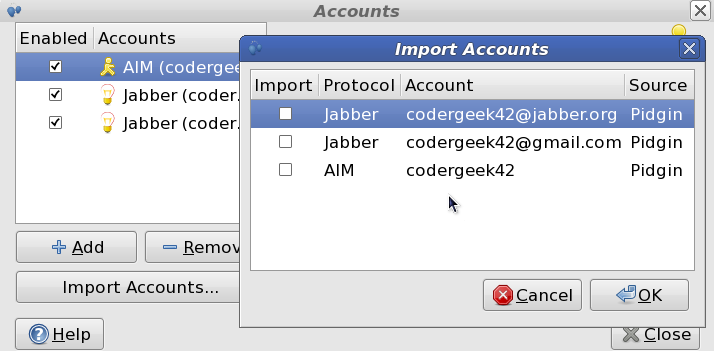Obituary: CurvyLooks
Just over a decade ago, I took the reigns on a Fedora package called gnome-theme-clearlooks-bigpack. Among other niceties, it had many color themes and Cairo-enabled widgets for the Clearlooks (now Adwaita) GTK+ theme engine. But there was one and only one reason I took it: The Cairo_Curve theme.
This theme was a very smooth and rounded (thank you, Cairo rendering) but otherwise faithful reproduction of the Bluecurve color scheme and design philosophy (whether written or not) of just being simple and easy on the eyes for long periods of time. As you can imagine, this is great for people like myself who are using their systems for many hours at a time every day. As someone who used it on a daily basis, when it was orphaned I could not simply let it go unmanaged.
Time went on, as it so quickly does, and in mid-2007 I found myself a bit despondent: the upstream maintainers had all but vanished. What sources I had, I immediately mirrored onto my personal webspace; and I changed those in the RPM .spec file to match. I realized that if I cared about it enough, I should become the upstream contact myself.
And that is exactly what I did. That November, I ripped away every theme except for Cairo_Curve, as that was the only one I had any interest in, and formed the CurvyLooks project: A modest attempt to keep the Bluecurve-like color scheme and theme design for Clearlooks and essentially forward-port it to future versions of GTK+ as necessary.
Time again went on, however, and the chaos of life caught up with me. Newer GTK+ versions caused a few minor bugs (warnings about unused or invalid portions of the gtkrc file, for instance); but since it still more or less worked, I did little to fix them.
And time continued on. It was now July of 2011, and GTK+ 3.0 had just been released. I had already a release candidate of CurvyLooks that “worked” (though not well) together with the series of GTK+ 3 release candidates; but the distinction between “functioning” and “working well” can be a large one, as it was here. I fixed what I could of the theme drawing issues (such as opaque tooltips) and updated it to work with GTK+ 3 and the then-new Adwaita engine (which superseded Clearlooks). I released this as as CurvyLooks 0.4 RC2; and there it has stayed for nearly four years.
Except I also did something else. I also disabled the Dark theme, as I had become so accustomed to the idea of a bright background and dark text/foreground that it simply made no sense to me. In particular, some programs would use the Dark theme if it was installed, while others stayed with the “normal” variant; and that mismatch was rather frustrating.
A few short months later, I happily installed the Fedora 17 Beta and was thrilled with what I saw. In fact, the default Adwaita theme was almost exactly what I imagined CurvyLooks should be. I kept using that default but there was something…some je ne sais quoi about that Adwaita theme that broke my “easy on the eyes” rule. I couldn’t tell if it was that the contrast was too high or that the colors were not saturated enough or something else entirely but it just didn’t feel right. So I forced myself to try the dark theme. And I liked it.
No, scratch that. I loved it. Having long since grown accustomed to the light-on-dark theme on my Android phone, my UI tastes had changed rather drastically. To quote Morpheus from The Matrix: “Fate, it seems, is not without a sense of irony.” I enabled the forced global dark theme and time went on once more…
It was now July of 2012. GTK+ uses Adwaita as its default and the theme is bundled as a gresource tarball file within the engine itself. Hoping to update CurvyLooks, I started by writing a simple gresource extraction script to unpack those files so that I could base my new CurvyLooks version on a recoloration of that theme. But having no need for the theme itself anymore, as a user of the Dark Adwaita theme, I simply did not have the patience to work through how to implement it for this new format of theme packaging. I focused my time and efforts elsewhere, in Fedora and in real life. Thus time slipped into the present…
I suppose this end is long overdue; but such is one of the great lessons about flexibility and power of Free software: Just because the original maintainers disappeared, as long as I was willing to put in the effort, I could keep the project running myself. While my contributions to it were small at best, it was fun, in its own little way, to go through the process of setting up and publishing my own work. But it was just “working” and rarely “working well;” and I could no longer give it the due diligence to make it as awesome as it once was.
It’s only fitting that I should let time slip, once and for all, into the future; but without CurvyLooks advancing with alongside it…(Unless, of course, someone else wants to repeat this upstream initiative and maintain it themselves!)

